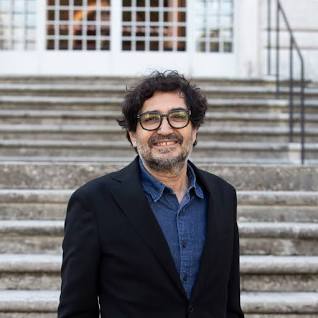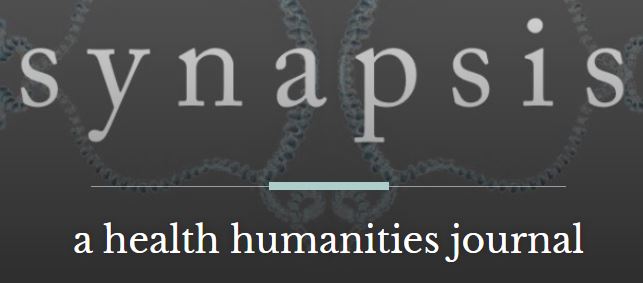
The global context of the visual cultures of the world of Islam, mainly in the Mediterranean, Near East, North Africa, Spain, South Italy and Sicily. Medieval aesthetic thoughts on visual arts and craftsmanship. The image of ‘Islamic’ art and the historiography of the field.
Ph.D., University of Edinburgh, 1995
Avinoam Shalem studied history of art at the universities of Tel Aviv, Munich (LMU) and Edinburgh (Ph.D 1995, Edinburgh University). Prior to his current appointment as the Riggio Professor, arts of Islam, at Columbia University in 2013, Shalem held the professorship of the history of the arts of Islam at the University of Munich (2002-2013). He was the Andrew Mellon Senior Fellow at the Metropolitan Museum of Art in New York in 2006; Scholar in Residence at the Getty Research Center in 2009 and in 2019; Max-Planck Professor Fellow at the Kunsthistorisches Institut in Florence between 2007-2015; Guest Professor at the Institute of Jewish and Christian Studies of the University of Luzern (September – December 2010); Guest Professor of Islamic art at the School of Arts and Aesthetics of the Jawaharlal Nehru University of New Delhi (January – March 2011); Lester K. Little Scholar in Residence at the American Academy in Rome (December 2015 – January 2016); Robert Sterling Clark Visiting Professor, Williams College Francesco (September 2016 – May 2017); Guest Scholar at BildEvidenz, Research Group at the Free University in Berlin (between 2018-2020); De Dombrowski Visiting Professor at the I-Tatti, Florence (September 2020 – December 2020). He also served as the director of the American Academy in Rome in the academic year of 2020/2021.
Shalem’s main fields of interest concern the global context of the visual cultures of the world of Islam in the Mediterranean, medieval aesthetic thoughts on visual arts and craftsmanship, and the making of the image of ‘Islamic’ art as well as the modern historiography of the field. He has published extensively on medieval Islamic, as well as on Jewish and Christian art. Professor Shalem is the author and editor of thirteen books and numerous articles. His current book project, “When Nature Becomes Ideology”, critically explores the varied approaches of ‘scaping’ and curating the rural landscape of Palestine after 1947.
Shalem acted as the initiator of the series of exhibitions Changing Views held in Munich in 2010/2011, co-curated the exhibition The Future of Tradition: the Tradition of Future in Haus der Kunst in Munich in 2010, directed (with Gerhard Wolf and Hannah Baader) the international, Getty-supported project Art Space and Mobility in the Early Ages of Globalization: The Mediterranean, Central Asia and the Indian Subcontinent 400-1650, and is currently running the research project Black Mediterranean/ Mediterraneo Nero – Artistic Encounters and Counter-narratives/ Incontri artistici e contronarrazioni, as part of the Getty Foundation’s Connecting Art Histories initiative (a joint project with Alina Payne, Villa I Tatti, Harvard University Center for Italian Renaissance Studies in Florence).
Selected Books
Islam Christianized – Islamic portable objects in the medieval church treasuries of the Latin West (Peter Lang, Frankfurt/M., 1996 second revised edition 1998).
The Oliphant: Islamic Objects in Historical Context (Brill, Leiden, 2004).
After One Hundred Years: The 1910 Exhibition »Meisterwerke muhammedanischer Kunst« Reconsidered, with Andrea Lermer (Brill, Leiden, 2010).
Facing the Wall: The Palestinian-Israeli Barriers, with Gerhard Wolf (Walter König, Cologne, 2011).
Constructing the Image of Muhammad in Europe (Walter de Gruyter, Berlin and Boston, 2013).
Die mittelalterlichen Olifante (Deutscher Verlag für Kunstwissenschaft, Berlin, 2014).
Gazing Otherwise: Modalities of Seeing in the Medieval Islamic Cultures. Edited by Olga Bush and Avinoam Shalem. Muqarnas 23 (2015).
The Salerno Ivories, Objects, Histories, Contexts. Edited by Anthony Cutler, Francesca Dell’Acqua, Herbert L. Kessler, Avinoam Shalem and Gerhard Wolf (Berlin, Gebr. Mann Verlag, 2016).
The Chasuble of Thomas Becket: A Biography (Munich, Hirmer Publishers, 2017).
Treasures of the Sea: Art Before Craft. Dossier edited by Avinoam Shalem, Espacio. Tiempo y Forma 5 (2017). See: http://revistas.uned.es/index.php/ETFVII/issue/view/961
Seeking Transparency: Rock Crystals Across the Medieval Mediterranean. Edited by Cynthia Hahn and Avinoam Shalem (Berlin, Reimer Publishing House, 2020)
Selected Articles
“Fountains of Light: The Meaning of Medieval Islamic Rock Crystal Lamps,” Muqarnas 11 (1994), 1-11.
“From Royal Caskets to Relic Containers: Two Ivory Caskets from Burgos and Madrid,” Muqarnas 12 (1995), 24-38.
“A note on the shield-shaped ornamental bosses on the facade of Bab al Nasr in Cairo“, Ars Orientalis 26 (1996), 55-64.
“Jewels and Journeys: The Case of the Medieval Gemstone Called al-Yatima” Muqarnas 14 (1997), 42-56.
“The ‘Banner of the Prophet’ in the Cathedral of Augsburg,” Interactions in Art, Proceedings of the International “Interactions in Art” Symposium, Hacettepe University, Ankara (Ankara, 2000), pp. 216-221.
“Why is the Lion always in a State of Fever? The Legend of the Sick Lion in Noah’s Ark as depicted in the mosaics of San Marco in Venice and the cathedral in Monreale,” Cahiers Archéologiques 49 (2001), pp. 39-46.
“The Portraiture of Objects: A Note on representations of Islamic Objects in European Paintings of the14th-16th centuries,” in: M. Bernardini, C. Borrelli, A. Cerbo and E. Sánchez García (eds.), Europa e Islam tra secoli XIV-XVI (Naples, 2002), pp. 497-521.
“Made for the Show: The Medieval Treasury of the Ka’ba in Mecca,” in B. O’Kane (ed.), The Iconography of Islamic Art. Festschrift in Honour of Professor Robert Hillenbrand (Edinburgh, 2004), pp. 269-283.
“Objects as carriers of real or contrived memories in a cross-cultural context,” the proceedings of the Symposium Austausch diplomatischer Geschenke in Spätantike und Byzanz, Mitteilungen zur Spätantiken Archäologie und Byzantinischen Kunstgeschichte 4 (2005), pp. 101-119.
“Manipulations of Seeing and Visual Strategies in the Audience Halls of the Early Islamic Period. Preliminary Notes,” in Franz Alto Bauer (ed.), Visualisierungen von Herrschaft, Byzas 5 (2006), pp. 213-232.
“Hybride und Assemblagen in mittelalterlichen Schatzkammern: Neue ästhetische Paradigmata im Hinblick auf die ‘Andersheit’,” in: Le trésor au Moyen Âge. Discours, pratiques et objets, ed. by Lucas Burkart, Philippe Cordez, Pierre Alain Mariaux and Yann Potin (Florence, 2010), 297-313.
“If Objects Could Speak”, The Aura of the Alif, Jürgen Wassim Frembgen (ed.), exhibition catalogue, Völkerkunde Museum, Munich (Munich, Prestel, 2010), 127-147.
“Translating Visions: A Japanese Lacquer Plaque of the Haram of Mecca in the L. A. Mayer Memorial Museum, Jerusalem,” Ars Orientalis 39 (2010), 148-173 (with A. Schweizer).
“Exceeding Realism: Utopian Modern Art on the Nile and Abdel Hadi al-Gazzar’s Surrealistic Drawings,” South Atlantic Quarterly 109,3(2010), 577-594
“Histories of Belonging and George Kubler’s Prime Object,” Getty Research Journal, 3 (2011), 1-14.
“Hidden Aesthetics and the Art of Deception: The Object, the Beholder and the Artisan,” in David Knipp (ed.), Siculo-Arabic Ivories and Islamic Painting 1100-1300 (Munich, Hirmer, 2011), 39-52.
“What do we mean when we say Islamic Art? An Urgent Plea for a Critical Re-Writing of the History of the Arts of the Islamic Lands,” To be published in: Historiographies of Islamic Art, eds. Margaret Graves and Moya Carey, Journal of Art Historiography 6, June 2012
“Dangerous Claims: On the ‘Othering’ of Islamic Art History and How It Operates within Global Art History,” Kritische Berichte. Zeitschrift für Kunst- und Kulturwissenschaften, vol. 2, 2012, 69-86.
“Multivalent Paradigm of Interpretation and the Aura or Anima of the Object” in: Benoît Junod, George Khalil, Stefan Weber and Gerhard Wolf (eds.), Islamic Art and the Museum: Approaches to Art and Archaeology of the Muslim World in the Twenty-First Century (London: Saqi, 2012), 101-115.
“From Object to Subject – conceptualizing the exhibition Future of Tradition: Tradition of Future in HDK, Munich (2010)” in: Beatrice von Bismarck, Jörn Schafaff, Thomas Weski (eds.), Cultures of the Curatorial (Leipzig, 2012), 167-187.
“Hitler’s Carpet: A Tale of One City,” Mitteilungen des Kunsthistorischen Institutes in Florenz 55,1 (2013), 119-143 (with Costanza Caraffa).
“Man’s Conquest of Nature: Al-Gazzar, Sartre, and Nasser’s Great Aswan Dam,” NKA, Journal of Contemporary African Art 32 (2013), 18-29
“Leggere tra le righe: attraverso i papiers découpés di Matisse”, In Matisse Arabesque, exhibition catalogue (Rome, Skira, 2015), 55-63.
“Orientalism Now: Arafat’s Kaffiyah – the Constructing and the Deconstructing of an Image,” Gerhard Wolf and Kathrin Müller (eds.), Bild. Ding. Kunst (Berlin and Munich, Deutscher Kunstverlag, 2015), 69-79 (colour plates: pp. 216-219).
“The Poetics of portability” in Alina Payne and Gulru Necipoglu (eds.), Histories of Ornament (Princeton, Princeton University Press, 2016), 250-261.
“Epilogue: The Salerno Riddle. Some Reflection on Artifacts in Post-Semiotic Age.” in: The Salerno Ivories, Objects, Histories, Contexts. Edited by Anthony Cutler, Francesca Dell’Acqua, Herbert L. Kessler, Avinoam Shalem and Gerhard Wolf (Berlin, Gebr. Mann Verlag, 2016), 241-245.
“Terra Miracula: Blessed Souvenirs from the Holy Land,” In: Barbara Drake Boehm and Melanie Holcomb (eds), Jerusalem 1000-1400. Every People under Heaven (New York, the Metropolitan Museum of Art Press, 2016), 23-25.
“Passages: Meyer Schapiro’s Early Travels and the Uniting Mediterranean Sea,” Convivium 3,2 (2017), 17-35.
“Intersection Iconographies: The Cases of Ernst Herzfeld and Henri Pirenne,” In Jaś Elsner (ed.), Comparativism in Art History (Routledge, 2017), 109-129.
Andreas Huyssen, Anson Rabinbach and Avinoam Shalem, “Nazi-Looted Art and Its Legacies: Introduction,”New German Critique 44 (2017), 1-7.
Hannah Baader, Avinoam Shalem and Gerhard Wolf, “Art, Space, Mobility in Early Ages of Globalization: A Project, Multiple Dialogue, and Research Program,“ Art in Translation, 9:1 (2017), 7-33.
“Treasures of the Sea: Art Before Craft,” Espacio. Tiempo y Forma 5 (2017), 15-34.
“The Discovery and Re-Discovery of the Medieval Islamic Object,” in: (Middle Ages). In: B.F. Flood and G. Necipoglu (eds.), A Companion to Islamic Art and architecture (Hoboken, NJ, John Willey & Sons, 2017), vol. I, pp. 558-578.
“Against Gravity: A Vertical History of Places and Things”. Cabinet Magazine, vol. 64, 2017, pp. 54-61.
“Resisting Time: On How Temporality Shaped Medieval Choice of Materials,” in Keith Moxey and Dan Karlholm (eds.) Time in the History of Art: Temporality, Chronology, and Anachrony (New York, Routledge, 2018), pp. 184-204.
“Objects in Captivity: some preliminary Notes on the Display of Islamic Arm and Armor;” Mitteilungen des Kunsthistorischen Institutes in Florenz, 2019, 437-465.
“Aesthetics of Resistance: The ‘Unbelievable’ Idol, its Life, and its Dual Death,” in Klaus Margit Kern and Krüger (eds), Transcultural Imaginations of the Sacred (Paderborn, Wilhelm Fink, 2019), 180-196.
“‘The Nation Has Put On Garments of Blood’: An Early Islamic Red Silken Tapestry in Split,” Dumbarton Oaks Papers 73 (2019), 389-408.
“‘You Carried the Moon in the Folds of Your Sleeve’: A Note on Wide-Sleeved Garments from Arabic Sources,” Zeitschrift des Deutschen Vereins für Kunstwissenschaft (Opus: Festschrift für Rainer Kahsnitz) 71 (2019), 57-72.
“What’s all the Fuss about the Humeima Ivories? A Note about the History of Writing on Early Carved Ivories in the Lands of Islam,” Quaderini di Vicino Oriente 15 (2019), 171-184.
“Oil and Art: The Action-Packed Scene in Baku Around 1900,” in The Rise of Islamic Art 1869-1939, exhibition Catalogue, The Calouste Gulbenkian Museum, Lisbon (Lisbon, 2019), 67-74.
“The Transformative Museum: Why Do We Need an other Museum for the Arts of Islam?” In Emmanuel Alloa and Chiara Cappelletto (eds.), Dynamis of the Image: Moving Images in the Global World (Berlin, De Gruyter, 2020), 329-352.
“Metaphors We Dress With: Medieval Poetics About Textiles,” in: The Hidden Life of Textiles in the Medieval and Early Modern Mediterranean, edited by Nikolaos Vryzidis (Turnhout, Belgium, Brepols, 2020), 45-66.
“On Original and ‘Originals’: The so-called ‘Copy’ of the Tashkent Quran in the Rare Collection Books at the Butler Library,” Philological Encounters (2020), 1-26.
“‘What a Small World’: Interpreting Works of Art in the Age of Global Art History,” Getty Research Journal, 13 (2021), 121-142.


